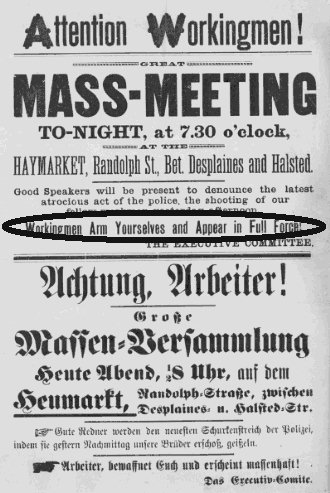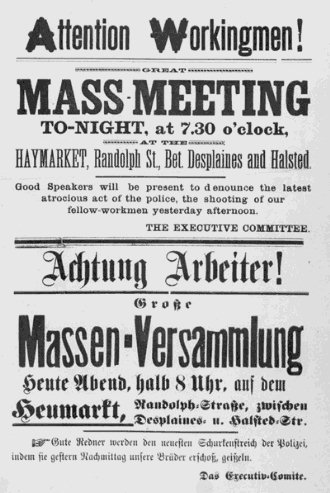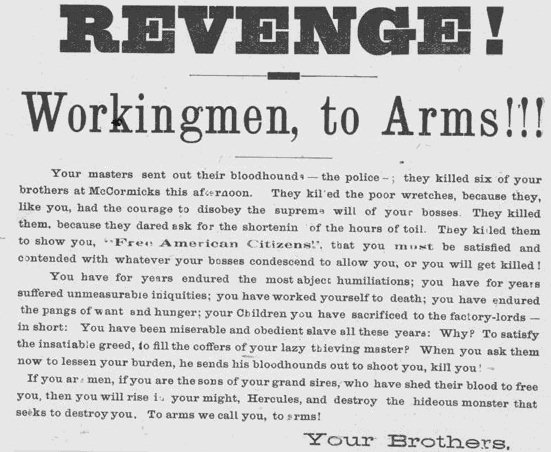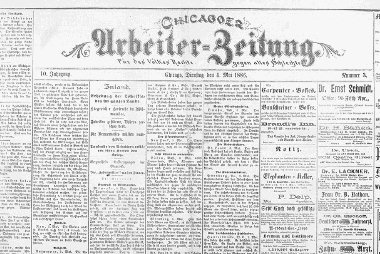1. "Attention Workingmen!" Meeting Announcement: Exhibits of the Prosecution and Defense
The image on the left is of the announcement of the meeting at Haymarket printed on May 4, 1886. The poster was introduced as evidence by the prosecution on July 16, 1886 as "People's Exhibit 5." The prosecution exhibits features a version of the announcement with the inflammatory language (encircled in the image below), "Workingmen Arm Yourselves and Appear in Full Force!" The image on the right is of the same announcement, except without the line making the controversial call to arms. The announcement on the right was introduced on August 2, 1886 as "Defense Exhibit 1." The controversial line written by Adolph Fischer. Albert Spies feared that the call to bring arms to the rally would scare potential supporters and reduce the crowd. When Spies threatened not to speak at the rally unless the line was taken out, the presses were stopped and the line removed--but not before a few hundred copies of the first version were in circulation.

LINK TO LARGER FULL-COLOR IMAGE
(Chicago Historical Society image)

LINK TO LARGER FULL-COLOR IMAGE
(Chicago Historical Society image)
2. Circular
The circular below was written by Albert Spies in response to the killing of workers on May 3, 1886 at the McCormick Reapers Works. The circular was written in both English and German. The prosecution introduced the circular into evidence on July 16, 1886 as "People's Exhibit 6." Hundreds of copies of the "Revenge" circular were distributed by anarchists on the night of May 3.

LINK TO COLOR IMAGE OF FULL CIRCULAR
(Chicago Historical Society Image)
3. Coded Story
According to prosecution witnesses, George Engel, at a May 3 meeting of anarchists at Grief's Hall (a saloon), announced a plan involving the German-language paper Arbeiter-Zeitung. Under Engel's plan, the appearance of the German word "Ruhe" (meaning "rest") in the notices column of the paper would be a signal to North Side activists to take militant action including bombing police stations, shooting police officers, and pulling down telegraph lines. In fact, the word "Ruhe" did appear in the notices ("Briefkasten") column of the Arbeiter-Zeitung edition of May 4 (image at left). The prosecution used this to link Albert Spies to the violence at Haymarket, although Spies claimed to have had no knowledge of the word's significance when it appeared in the paper. The image on the right is of a note in the handwriting of Spies introduced by the prosecution as "People's Exhibit 10."


